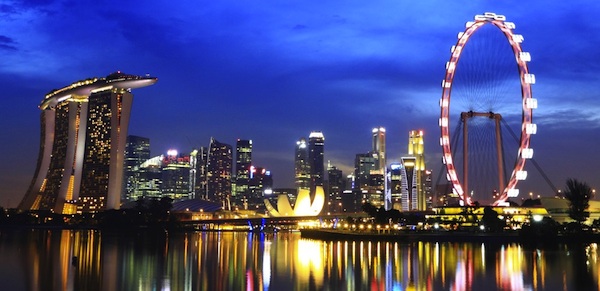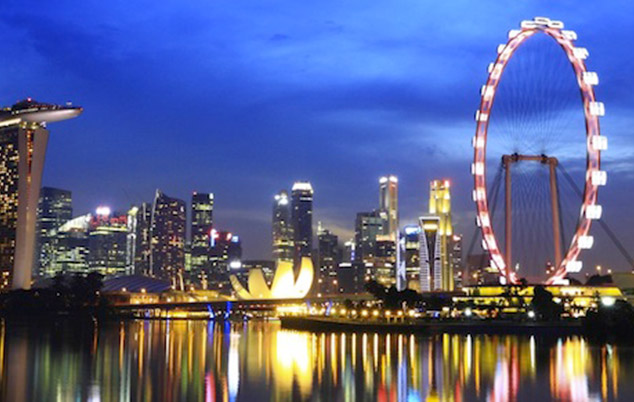Buying that dream home in an exotic location abroad just got easier as the Reserve Bank of India (RBI) on Tuesday doubled the annual overseas investment ceiling for individuals to $2,50,000 from $1,25,000 as India’s foreign exchange reserves have scaled an all-time high.

“On a review of the external sector outlook and as a further exercise in macro-prudential management, it has been decided to enhance the limit under the Liberalised Remittance Scheme (LRS) to $2,50,000 per person per year,” the RBI said in its Bi-Monthly Monetary Policy Statement. However, RBI clarified that all current account transactions like medical treatment, purchase of journals, and repayment of student loans and credit card dues would be included under the $250,000 cap.
LRS allows Indian citizens to acquire and hold shares, debt instruments or other assets such as real estate overseas without the RBI’s approval. So what this essentially means is that a family of four can now remit as much as $1 million every year to purchase assets overseas.
Indians are increasingly acquiring properties across the globe but the leading destinations for offshore properties remain London, New York, Singapore and Dubai. Exotic holiday destinations such as Thailand, Malaysia, Southern France, Florida and Mauritius are also gaining rapid popularity among those looking to invest abroad in real estate.
In fact, according to a Dubai Land Department(DLD) report in January 2015, investments in Dubai’s realty market by Indians have surpassed those from other countries to AED 18.12 billion (Rs 3,035 crore) in the year gone by. Data from National Association of Realtors showed that Indians represented 6 percent of US home buyers in 2014, spending $5.8 billion, on par with buyers from Britain. Buyers from five countries account for over half of international home sales in the US, with Indian buyers ranked third. C
For affluent Indians, American real estate is a security blanket in the face of a bubble in real estate prices in major Indian cities. According to Anuj Puri an Indian wishing to buy a property in New York, London or Singapore can avail considerably lower interest rates of local banks in those countries. Also, many foreign property markets are more transparent than ours; so investors can get ‘clean’ deals much faster and easier.
Investment in property abroad makes sense for those who are employed or have business interests in the country of choice. Indians who have settled or are planning to settle abroad permanently, are of course, prime candidates.
“An allocation by Indian investors to global developed markets, such as, US, UK, Europe and Japan is very critical since a balanced investment portfolio should have exposure to developed economies and capital markets, hard currencies, such as, Dollar, Pound, Euro and Yen,” said Dr Vikas Gupta, EVP, Arthveda Fund Management.
In view of the worsening current account deficit and a volatile rupee, the RBI had in August 2013 reduced the ceiling from $200,000 to $75,000 per person in a year under the LRS. What’s worse is at the time it had even banned the purchase of property abroad. The press release at the time said: “While current restrictions on the use of LRS for prohibited transactions, such as margin trading and lottery would continue, use of LRS for acquisition of immovable property outside India directly or indirectly will, henceforth, not be allowed.”
Consequently, with improvement in forex situation, it was raised to $125,000 in June 2014. In mid-January, the foreign exchange reserves touched a new life-time high at $322.135 billion driven by higher foreign fund inflow and lower forex outgo as global crude oil prices came down sharply.
Via : Firstpost.com
Connect With Us
Related Posts
- Real Estate Act comes into effect: 10 things you need to know about new law ( May 4, 2017 )
- Expats Living in Comfort – Hyderabad, India ( May 4, 2017 )
- MNC queue to Hyderabad grows longer; JP Morgan & IBM look for office space ( June 22, 2016 )
- An Apple in Hyderabad’s IT Garden: CEO Tim Cook’s big announcement Today ( May 19, 2016 )
- Hyderabad May get Disneyland Park ( April 22, 2016 )
- Indian Office Space Absorption Up 11% in Q4: Survey ( April 13, 2016 )
- Cognizant plans to add 8,000 people at Hyderabad facility ( March 9, 2016 )
- Ranked 139 in world, Hyderabad is Best Indian City to Live in ( February 24, 2016 )
- The Platina – Exclusive Commercial Space, Hyderabad ( February 19, 2016 )
- Apple, Inc set to open new $25 million Tech Center in Hyderabad, India by June ( February 16, 2016 )
Recent Posts
Recent Comments
Archives
- February 2018
- October 2017
- May 2017
- June 2016
- May 2016
- April 2016
- March 2016
- February 2016
- January 2016
- December 2015
- November 2015
- October 2015
- July 2015
- June 2015
- May 2015
- April 2015
- March 2015
- February 2015
- December 2014
- November 2014
- October 2014
- September 2014
- August 2014
- July 2014
- June 2014
- May 2014
- April 2014
- March 2014
- February 2014
- January 2014
- December 2013
- November 2013
- October 2013
- September 2013
- August 2013
- July 2013
- June 2013
- May 2013
- April 2013
- March 2013
- February 2013
- January 2013
- December 2012
- November 2012
- October 2012
- September 2012
- August 2012
- July 2012
- June 2012
- May 2012
- April 2012
- March 2012
- February 2012
- January 2012
- December 2011
- November 2011
- October 2011
- September 2011
- July 2011
- June 2011
- May 2011
- March 2011
- November 2010
- October 2010
- September 2010
- August 2010
- July 2010
- May 2010
- April 2010
- March 2010
- February 2010


Leave a reply